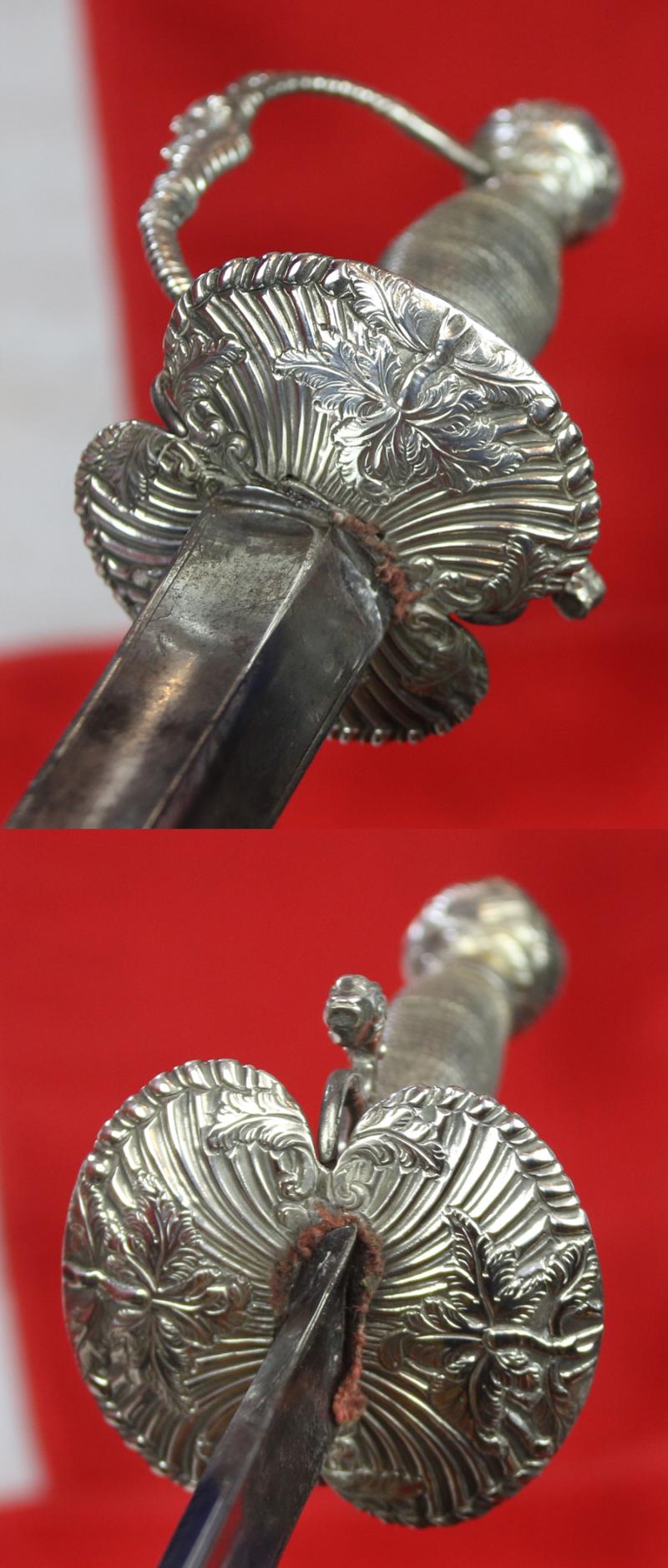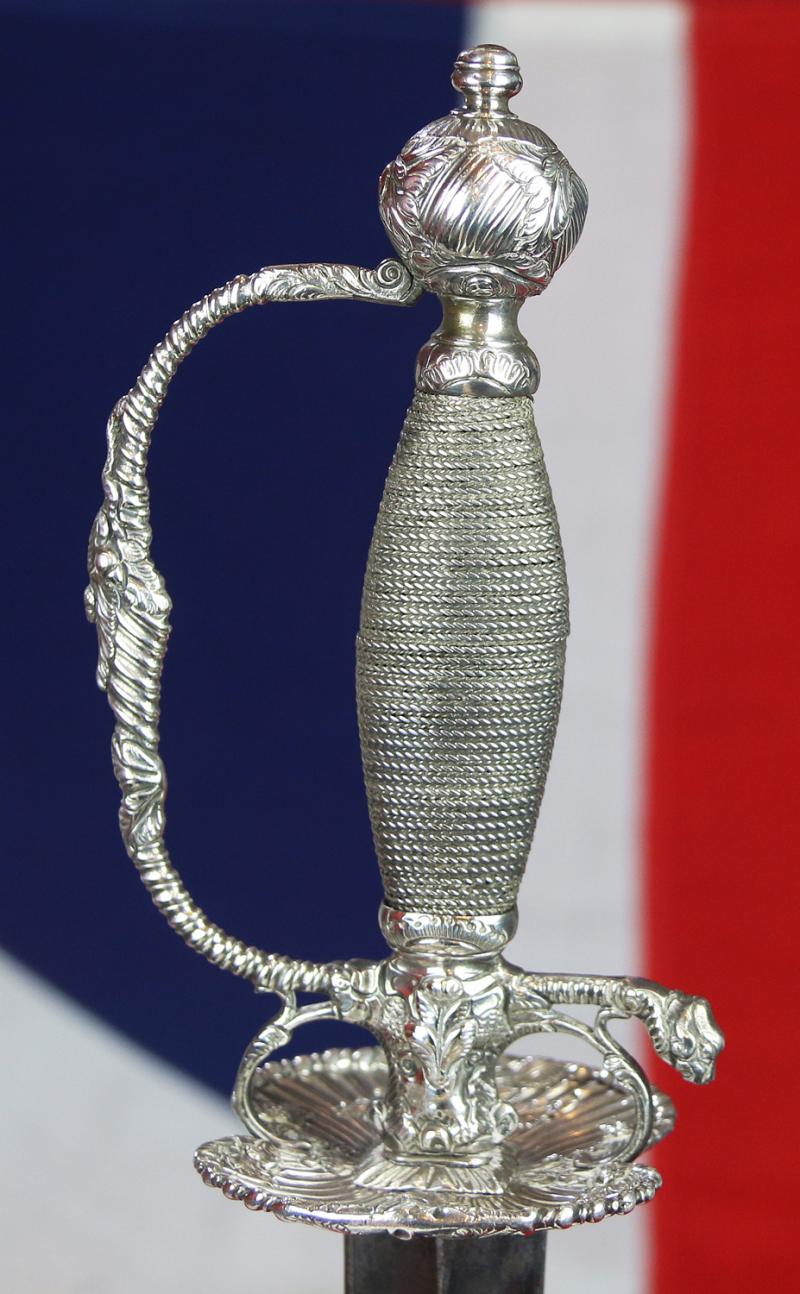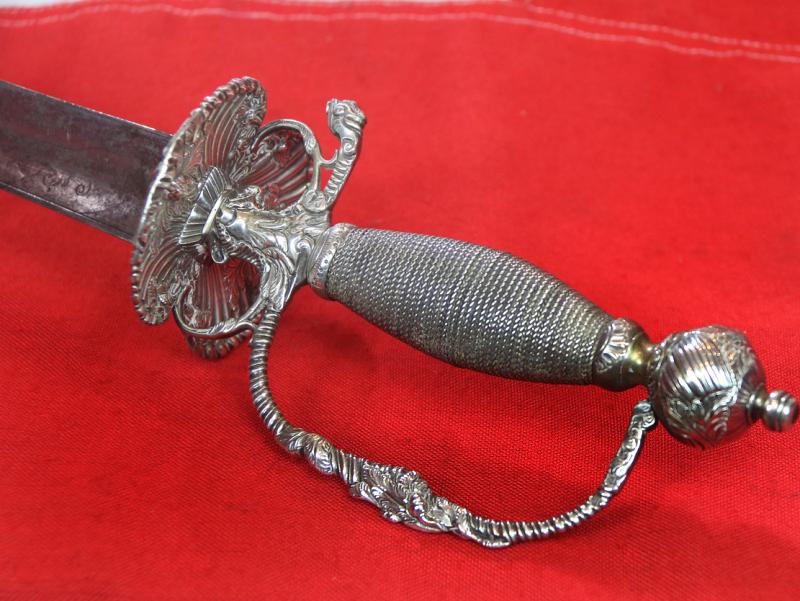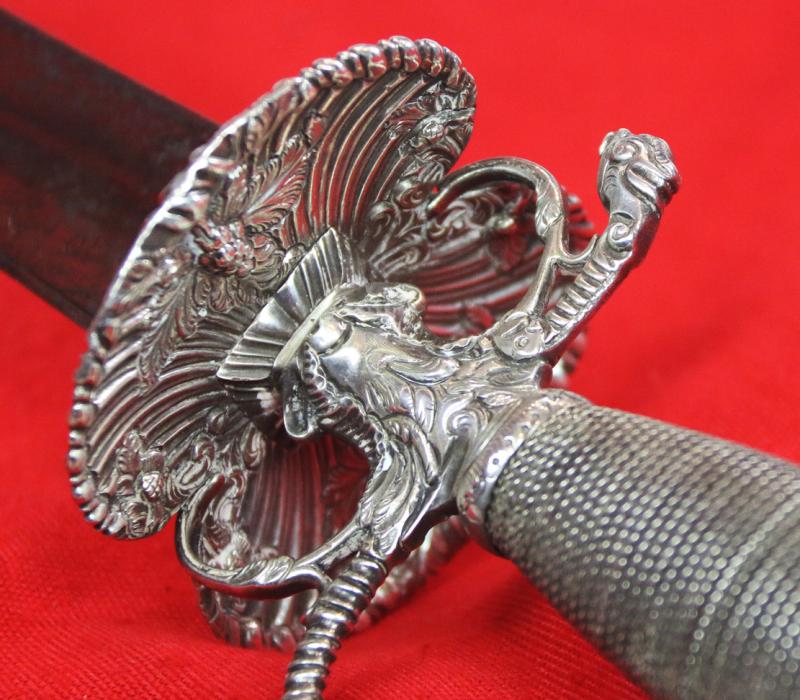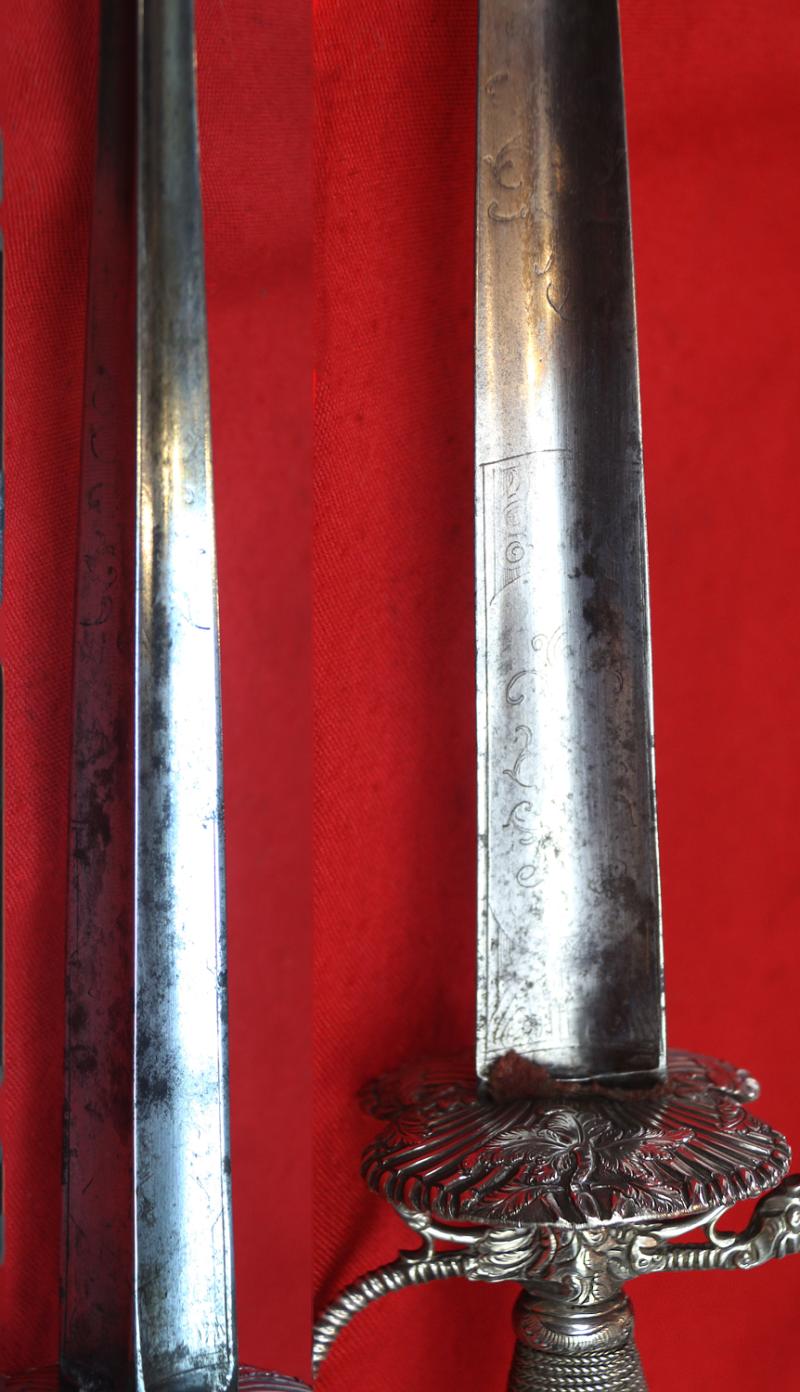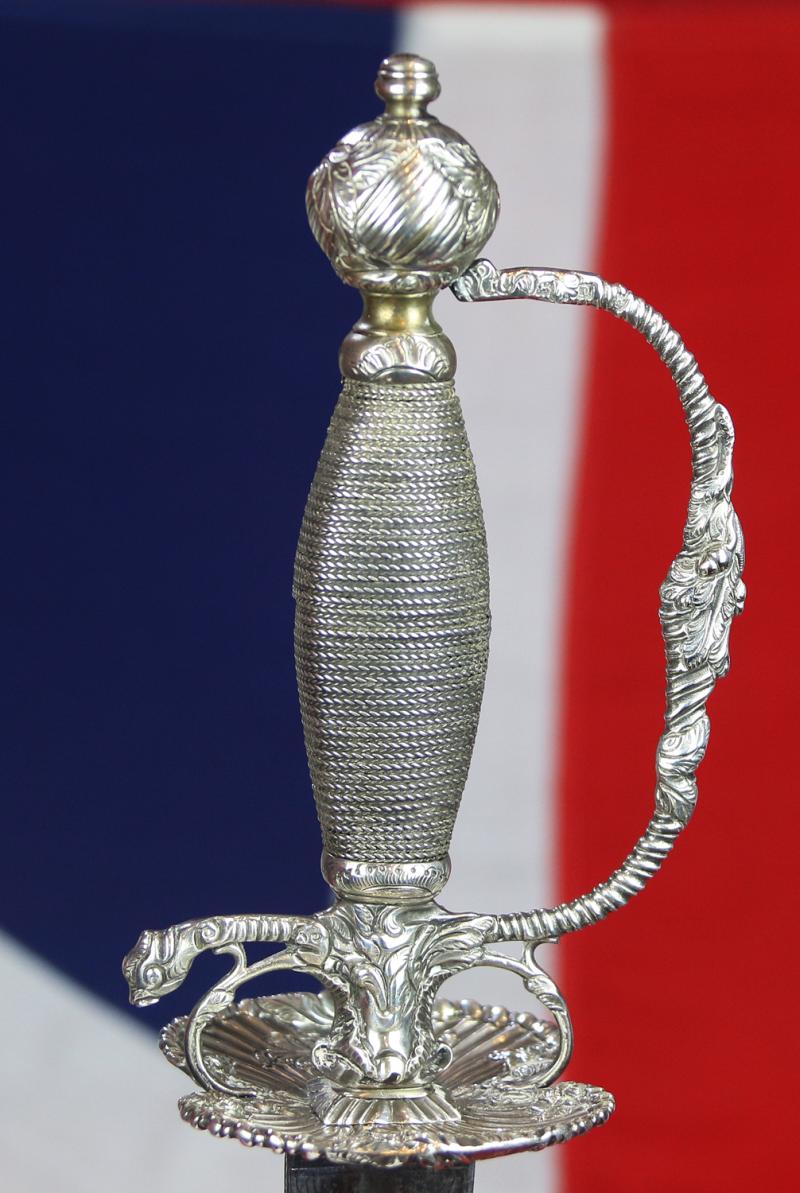A Magnificent 18th Century Silver Hilted Small Sword, Dated 1758, with Colichmarde Blade. This Is One Of The Most Beautiful To Be Seen
A combination of the finest 18th century artisan's skill of both a silversmith and bespoke swordsmith. Circa 1758 and IC , probably John Carman of London.
General George Washington, later the first President of the United States, had a very similar sword that he used during his service as commander of the new American Army in the American War of Independance from 1776 onwards
Ideal in its day for duelling or close quarter combat, as well as being a simply fabulous, finest quality sword of immense beauty. Fine cast and chased silver hilt in the elegant rococo style with double shell guard single knucklebow and pas dans. The grip is bound in its original twisted silver wire. The guard has enchanting and highest quality workmanship with a scrolling, pierced, rococo shell pattern with florid embellishments thoughout. Colishmarde blade with bright steel finish. The highly distinctive colishmarde blades appeared in 1680 and were popular during the next 40 years at the royal European courts. The colichemarde bladed swords had a special popularity with the officers of the French and Indian War period. Even George Washington had a very fine one just as this example.
The colichemarde descended from the so-called "transition rapier", which appeared because of a need for a lighter sword, better suited to parrying. It was not so heavy at its point; it was shorter and allowed a limited range of double time moves.The colichemarde in turn appeared as a thrusting blade too and also with a good parrying level, hence the strange, yet successful shape of the blade.
This sword appeared at about the same time as the foil. However the foil was created for practising fencing at court, while the colichemarde was created for dueling. With the appearance of pocket pistols as a self-defense weapon, the colichemardes found an even more extensive use in dueling.
This was achieved thanks to a wide forte (often with several fullers), which then stepped down in width after the fullers ended.The result of this strange shape was a higher maneuverability of the sword: with the weight of the blade concentrated in one's hand it became possible to maneuver the blade at a greater speed and with a higher degree of control, allowing the fencer to place a precise thrust at his/her adversary. This sword is a true work of art, in it's beauty form, quality and balance.
The small sword or smallsword is a light one-handed rapier type sword designed for thrusting which evolved out of the longer and heavier rapier (espada ropera) of the late Renaissance. The height of the small sword's popularity was during the 18th century, when any civilian or military, with pretensions to gentlemanly status would have worn a small sword on a daily basis.
The blade of a small sword is comparatively short at around 0.6 to 0.85 metres (24 to 33 in), though some reach over 1 metre (39 in). It usually tapers to a sharp point but may lack a cutting edge. It is typically triangular in cross-section, although some of the early examples still have the rhombic and spindle-shaped cross-sections inherited from older weapons, like the rapier. This triangular cross-section may be hollow ground for additional lightness. Many small swords of the period between the 17th and 18th centuries were found with colichemarde blades.
It is thought to have appeared in France and spread quickly across the rest of Europe. The small sword was the immediate predecessor of the French duelling sword (from which the épée developed) and its method of use—as typified in the works of such authors as Sieur de Liancour, Domenico Angelo, Monsieur J. Olivier and Monsieur L'Abbat—developed into the techniques of the French classical school of fencing. The small sword was mainly used as a duelling weapon.
Militarily, small swords continued to be used as a standard sidearm for infantry officers.Small swords were used both by the military (where they served more as a sign of a certain rank rather than a real weapon for close combat) and as a dueling weapon. The very height of the small sword's widespread popularity was in the 18th century, when it was considered fashionable by aristocrats ("no gentleman was dressed without his sword" – contemporary idiom of the middle of the 18th century), but it was still used as a duelling weapon
John Carman (II) was indentured to his father on 19 June 1736 at the age of fourteen. He was elected Master of the Cutlers' Company in 1761 and died in 1764 at the age of 41.
Code: 24952
2975.00 GBP


